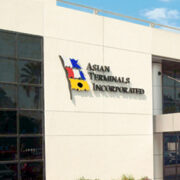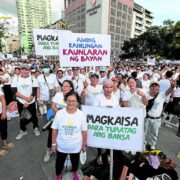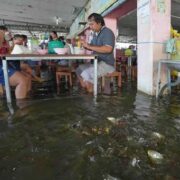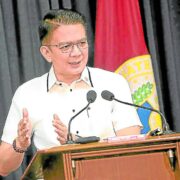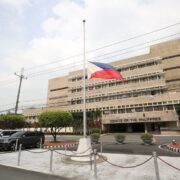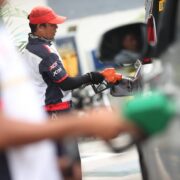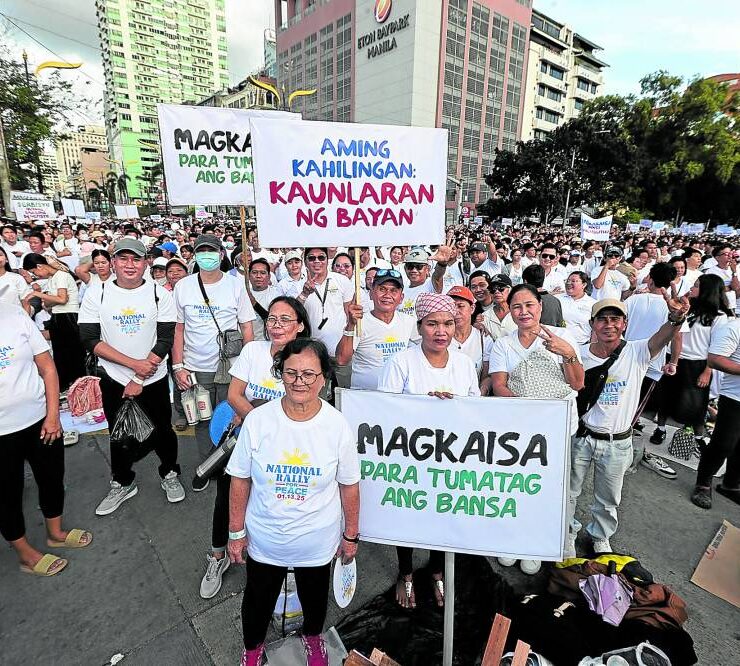‘Nika’ devastates Isabela, Aurora

CITY OF ILAGAN—After enduring three storms in just three weeks, northern Luzon and nearby provinces were dealt with another blow as Typhoon “Nika” (international name: Toraji) struck with powerful winds and relentless rains on Monday, sweeping through vulnerable communities, forcing thousands of residents to flee their homes to seek safety.
At least 11,562 residents from 3,727 families in Isabela alone, one of the hardest hit provinces, took refuge in evacuation centers on Monday, according to the provincial disaster risk reduction and management council.
“Debris is flying everywhere, and trees are uprooted,” Dinapigue town resident Angelo Erece shared, as his village saw 212 families, or 463 people, rushing to evacuation centers to escape the dangerous conditions.
Jessielyn Almoguerra, a resident of Isabela’s Echague town, reported that strong winds had torn corrugated metal sheets from roofs in their village.
Most of the other evacuees were from the towns of Alicia, Aurora, Benito Soliven, Cabagan, Burgos, Echague, Gamu, Luna, Naguilian, Ramon, Roxas, San Guillermo, San Isidro, San Mariano and Santo Tomas.
Isabela provincial administrator Noel Manuel Lopez urged villagers to remain indoors and avoid gathering driftwood or fish amid the hazardous conditions.
In an advisory, Gov. Rodolfo Albano III also reassured residents that emergency supplies were already on standby, even as he hoped that flooding could be avoided.
“Luckily, most of our farms have already been harvested,” he said.
Tropical Cyclone Wind Signal No. 4 was hoisted over central and southern portions of Isabela (Dinapigue, San Mariano, San Guillermo, Jones, Echague, Ramon, San Isidro, City of Santiago, Cordon, Roxas, Burgos, Reina Mercedes, Naguilian, Benito Soliven, Gamu, San Manuel, Aurora, San Mateo, Cabatuan, Alicia, Luna, City of Cauayan, Angadanan, Quezon, Mallig, Quirino, City of Ilagan, Delfin Albano, San Agustin) while the rest of Isabela was under Signal No. 3.
On Oct. 24, Isabela was struck by Severe Tropical Storm “Kristine” (international name: Trami), which made landfall in the province, leaving a trail of destruction.
Kristine was then followed by Super Typhoon “Leon” (international name: Kong-rey), which hit the province between Oct. 28 and Oct. 29, and by Typhoon “Marce” (international name: Yinxing) on Nov. 7.
Landfall
In nearby Aurora, where Nika made landfall in the vicinity of Dilasag town at 8:10 a.m. on Monday, heavy rains and fierce winds forced the evacuation of 1,834 families, or 5,244 individuals, across the province.
In a phone interview, Elson Egargue, head of the Aurora Provincial Disaster Risk Reduction and Management Office, said preemptive evacuations initially moved 648 families, or 1,852 people, to safety.
But as the typhoon intensified and made landfall, more residents were forced to leave their homes.
The towns of Dilasag and Casiguran have been placed under Signal No. 4. Dinalungan is under Signal No. 3, while Dipaculao, Santa Maria and Baler are under Signal No. 2, and Dingalan and San Luis are under Signal No. 1.
Most evacuees, who were sheltered in government-managed buildings and parishes, were from the towns of Dilasag, Casiguran, and Dinalungan in northern Aurora, where conditions have become particularly hazardous.
Two rivers in Dilasag, which is at the border of Isabela, have overflowed to the level of approaches to bridges.
“In those three towns, they were really hit by strong winds and rain, so they also lost electricity,” Egargue said.
On Sunday, Aurora was placed on red alert during a predisaster meeting presided by Gov. Reynante Tolentino.
Work in government offices and classes in public and private schools were suspended on Monday while earth-moving equipment were readied in cases of landslides.
DOH emergency response
The Department of Health (DOH) Central Luzon had launched emergency response efforts through its provincial offices to assist distressed or evacuated residents.
The DOH said it has been working closely with local stakeholders and has prepared essential medical supplies, emergency kits, and water, sanitation and hygiene commodities.

